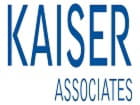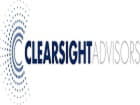First, Lockheed Martin (NYSE:LMT) bought Sikorsky from United Technologies.
Then, in 2020, Raytheon (NYSE:RTX) bought United Technologies itself.
In between, Northrop Grumman (NYSE:NOC) acquired Orbital ATK and L3 (NYSE:LHX) acquired Harris Corp.
For the longest time, it's seemed that the defense sector was moving in only one direction, collapsing in on itself, becoming more and more concentrated, and with the number of pure-play defense stocks available for investors to buy getting smaller and smaller.
But no longer. This year, in 2021, investors will finally see a new defense stock come to market: Leonardo DRS.

IMAGE SOURCE: GETTY IMAGES.
Introducing Leonardo DRS
If you aren't yet familiar with Leonardo DRS, that's not surprising. It's certainly not the biggest defense company in the world. Total revenues in 2019 were just $2.7 billion, a tiny fraction of the business done by defense giants such as General Dynamics (NYSE:GD) or Boeing (NYSE:BA) -- or any of the other companies named above for that matter.
Leonardo DRS isn't even an entirely American defense contractor -- not anymore, at least. Although originally founded in 1969, in Mount Vernon, New York, as Diagnostic Retrieval Systems, and currently based in Arlington, Virginia, Leonardo DRS is now a subsidiary of a subsidiary of Italy's Leonardo S.p.a., the military helicopter-maker that was formerly known as Finmeccanica S.p.a.
Here in the U.S., Leonardo DRS focuses its activities on the supply of advanced sensors, computer and communications networks, and air defense and ship propulsion systems to the U.S. military, reports S&P Global Market Intelligence.
The Leonardo DRS IPO
And now it's going public. In an S-1/A filing with the Securities and Exchange Commission this week, Leonardo DRS described a plan by its immediate parent company, Leonardo S.p.a. subsidiary Leonardo US Holding, to sell 31.9 million shares of stock in an initial public offering on the NYSE. Leonardo plans to list its shares under ticker symbol "DRS," and for ease of reading, I'll refer to the prospective IPO by that name from now on.
The 31.9 million shares for sale represent a 22% stake in the company, implying that post-IPO DRS will have 145 million shares outstanding (the balance being still owned by the parent company). At the midpoint of the stock's targeted $20 to $22 IPO price, this, in turn, implies a market capitalization of about $3 billion for DRS stock.
Now ... is that a good price or a bad price for investors to pay?
Valuing Leonardo DRS
Well, let's see here. According to the IPO prospectus (the S-1/A), DRS:
- Earned $85 million in fiscal 2020, up 13% from 2019
- Generated positive free cash flow of $74 million -- down 33% from 2019
- Reported sales of $2.8 billion -- up just 2% year over year
The weak sales growth and negative movement in free cash flow certainly don't look too appealing. Then again, 2020 was kind of a weird year for many companies, so I wouldn't necessarily hold that against DRS. Especially not when you consider that over the last five years, DRS has posted annualized sales gains of about 12% per year.
I also note that the $2.8 billion in fiscal 2020 sales DRS reported is very close to the $3 billion market capitalization it is targeting, resulting in a price-to-sales ratio of less than 1.1 -- very close to the 1.0 P/S ratio that has been the historical norm for defense contractors. Viewed from that perspective, while DRS stock may look pricey at more than 35 times trailing earnings (and more than 40 times free cash flow), I wouldn't necessarily call the stock overpriced -- not at this price-to-sales valuation, and not in light of its superior growth rate.
A couple of final notes: It's worth pointing out that DRS has a backlog of work to be done standing at $3.3 billion -- up 16% from a year ago and 18% more than 2020 sales -- and it booked more than $3 billion worth of new orders last year. The resulting book-to-bill ratio of 1.1 shows that DRS is still growing its business nicely.
It's also worth noting that the budget of the U.S. Department of Defense -- DRS's biggest customer, accounting for 84% of its annual sales -- grew barely 5% per year over the last five years. This means that DRS is growing more than twice as fast as its target market, and thus, presumably, gaining share in the defense market.
Between the reasonable valuation and the superior growth rate, I conclude that DRS is appropriately valued at its target IPO price -- and maybe even a bit of a bargain.















